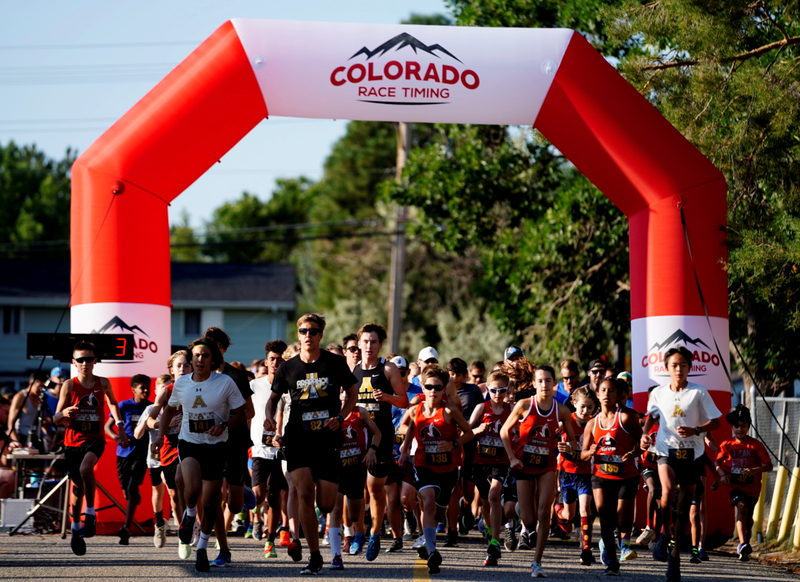
After timing large races, we often get a few questions from runners asking why results are not posted by chip time and instead by gun time. Isn’t that the whole point of chip timing? First, let’s clarify a few things. Gun time is the time elapsed between when the race starts (gun goes off) and when the participant crosses the finish line. Chip time or net time is the time the person crosses the start line mats and crosses the finish line mat; chip time will always be less than gun time.
When races are sanctioned by the USATF and for prize money awards, gun time is always used for results and rankings. If the race is a not a USATF event, then it is up to the race director to decide if gun time or chip time should be used for results and awards.
At Colorado Race Timing we default to gun time scoring unless the race director requests that chip time is used instead. The logic is that a race is a race to the finish line and not a time trial, which it becomes when one uses net time.
At the Turkey Trot 5k in Colorado Springs (2011), Carl Arnold tossed in a kick at the finish to pass Kenny Foster to become the second person to cross the line, Kenny ended up taking third. However, Kenny actually had a faster net time than Carl and we are talking by thousandths of a second. Thus if we had the results done by chip time, Carl would have thrown in that surge to pass Kenny all for naught and even though he was the second person to cross the finish line the results would have had him in third.
It also applies to individuals competing for age group awards, check out this video. This video comes from the Fans on the Field 10K which had over 3,000 participants. In the video, you can see Jay Survil throwing a kick to pass Greg Diamond and winning the 50-55 age groups. Now had we calculated results on chip time, Greg would have won the division. яндекс
As a runner, I can vouch that if I got outkicked to the finish line that I would not want to win the age group award based on chip time – the effort should be rewarded accordingly and you’re racing the person and not the clock. In fact, Jay told me that at another race he ran this summer they did results by chip time and the same thing happened, but this time he wasn’t awarded the age group victory even though he crossed the finish line before his age group competitor. Jay told me that he brought the issue up with the timers and they were not aware of the USATF rule.
Most small races that we time this issue doesn’t even come up as the results and standings are the same, be they chip or gun time. It’s only in larger races where this becomes an issue and questions arise as it can often take minutes for those at the back of the pack to reach the start line.
This was first the lesson in Race Timing 101; look for a future blog post where we talk the ins and outs of timing, race directing, course management and logistics 101.


